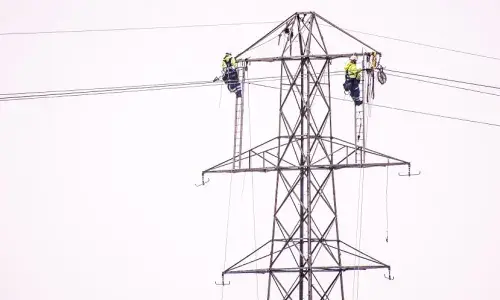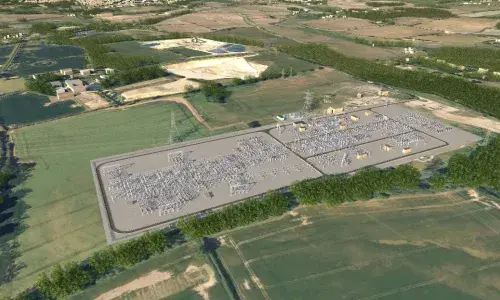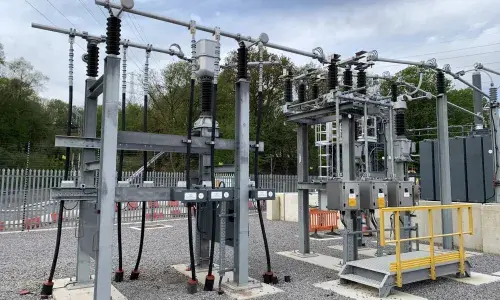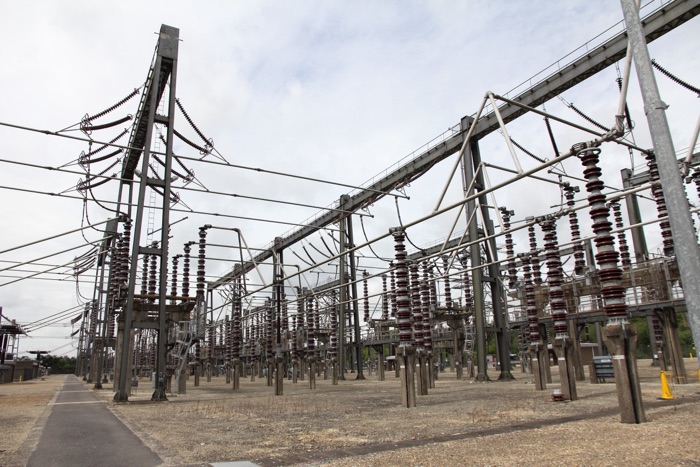
Distribution and transmission connections - what's the difference?
The differences between high voltage electricity transmission and distribution connections can be varied and complex. Generally, some limits of capacity and voltage classifications can be applied. But this isn’t always the case.
So, what are the differences?
Defining transmission connections
Power transmission is the large-scale movement of electricity at extra high voltage levels from the point of generation to substations. Transmission connections are usually defined as those who wish to connect to the extra high or high voltage transmission network . This network has a connection voltage of above 132kV, up to 400kV. The transmission network is responsible for transporting electricity across the country, from where it is generated to where it is needed. The transmission network does not directly feed into homes and businesses, this is fed via the distribution system through the transformation of voltages down to 132kV and below.
Transmission Owners

Across England, Wales and Scotland, there are three Transmission Owners. They are responsible for the national high voltage networks and transmission connections. National Grid Electricity Transmission manages England and Wales, with Scottish Power (SP ) Transmission and Scottish & Southern Electricity Networks (SSEN) Transmission in Scotland.
Generators and Storage Connections
Diverse types of large-scale generation and storage technology connect to the high voltage transmission networks, including onshore and offshore wind farms, solar farms, battery storage, tidal power, nuclear and gas-powered generators.
These larger generators connect directly onto the transmission system to ensure demand can be met across the country whenever needed. Storage facilities once connected can either take power from the networks when there is an excess of generation, or they can put that power back into the network when it is needed, in times of high demand.
Interconnectors
Interconnectors play a significant role in our pursuit of net zero. They often connect large offshore wind farms to the transmission system, or they may bring power from other countries to help meet demand here, as well as exporting it at times of excess generation. These interconnectors connect directly into our networks to ensure power flows both in and out of the network can be maintained.
Transmission connected demand
Some users may need to take power from the transmission network to supply networks or industrial centres. More about transmission connected demand users is detailed below.
Distribution Network Operators
Distribution Network Operators (DNOs) ensure that the local lower voltage networks, which supply domestic homes and businesses, are working effectively. They maintain their own network assets and connect their own users via their own infrastructure, but also connect into the transmission network for a constant power supply.
Large industrial demand
Industrial connections can vary depending on size, requirements and location, but large consumers of electricity, such as steel manufacturing, car factories or the railway may connect directly to the high voltage transmission system. Data centres have also recently significantly increased demand, ranging in size up to 600MW in consumption, and often requiring transmission network impact studies.
Specific system constraints
Depending on the area of the country, or the size of the connection and the infrastructure around it, some characteristically smaller connections may also need to come through the transmission networks. For example, in London, the complexity of the connections landscape often means that new connections must be carefully assessed by NGET to ensure the wider security of the network.
Defining distribution connections
Power distribution can be defined as the conversion of high voltage electricity at substations to lower voltages that can be distributed and used by private, public, and industrial customers. The distribution networks and DNOs are an integral part of the electricity system in the UK. They are responsible for the distribution of electricity from either the transmission system or embedded generators to homes and businesses. The connection voltages for distribution networks are 132kV and below. Limits on MW capacity are more difficult to define and will often vary depending on location and network capacity.
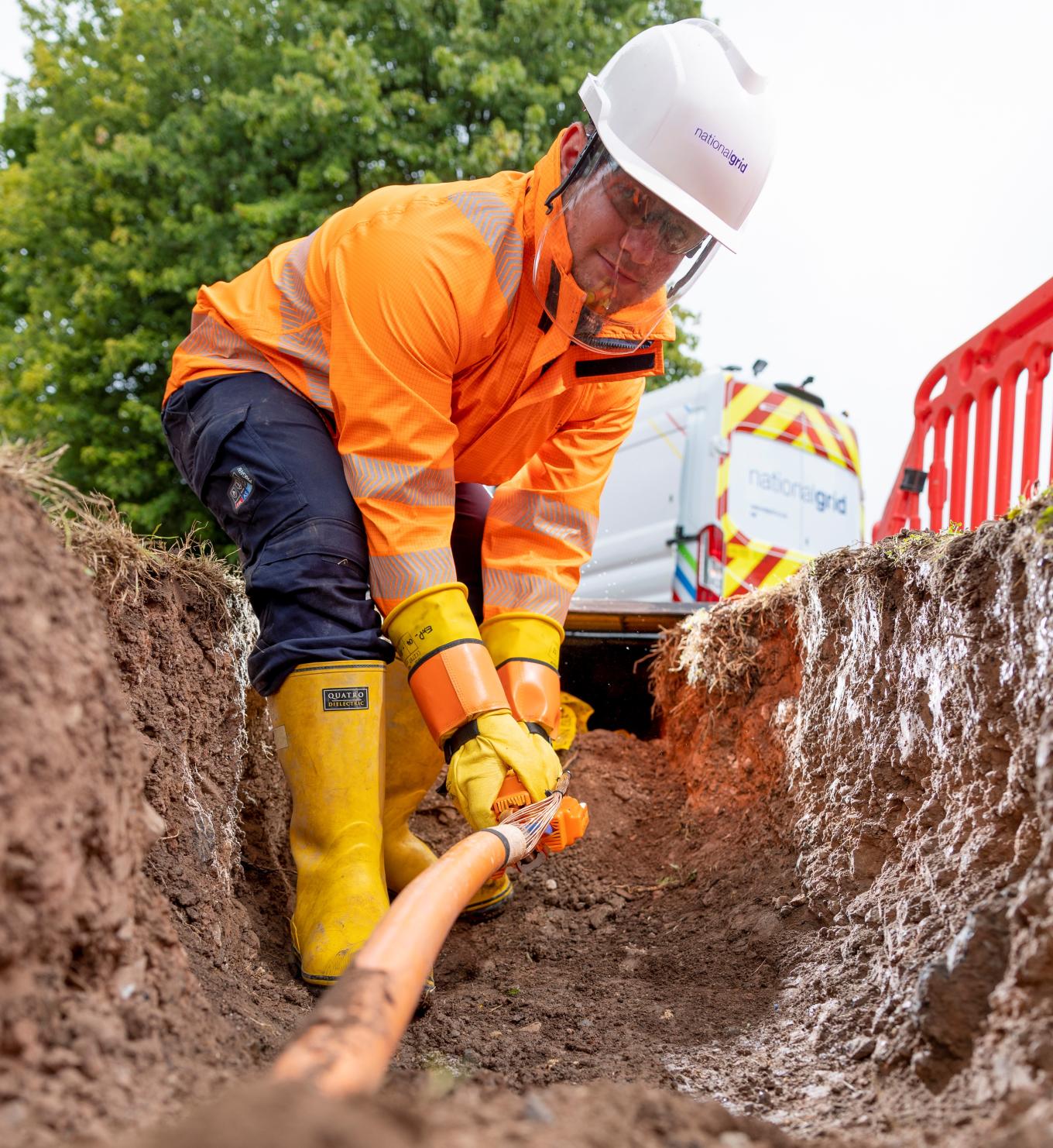
Independent Distribution Network Operators (IDNOs)
IDNOs own and operate small, independent networks within existing demand networks controlled by the DNOs. They can be set up for domestic or business uses, ensuring that the infrastructure is specifically designed for certain purposes. These networks are designed and constructed by Independent Connections Providers (ICPs) under licenses from Ofgem. IDNOs are subject to the same regulations as DNOs.
Embedded generation
Embedded generation is the electrical output of an asset that goes onto the local networks and managed by the DNOs rather than the transmission system. These plants can help manage local demand as well as feeding back through grid supply points (GSPs) to the transmission system should extra capacity be required. Types of embedded generator include the same range of assets as larger generation, but also include smaller specialised ‘peaking’ plants, which help to maintain the system balance at times of high demand.
Smaller scale industrial and housing developments
For factories or industry wishing to connect either small scale self-sufficient generation or to connect new infrastructure with higher than ordinary demand, must apply through the DNO connections process. New housing developments must also go through the process, with the size of the development dictating how much work needs to be completed to ensure supply.
Reforming the connections process
Rapid change in the energy landscape has transformed the type and volume of projects wanting to connect to both the transmission and distribution networks, leading to longer waiting times for customer connections. Find out more below about how the networks are working towards reforming the connections process to address these issues.
